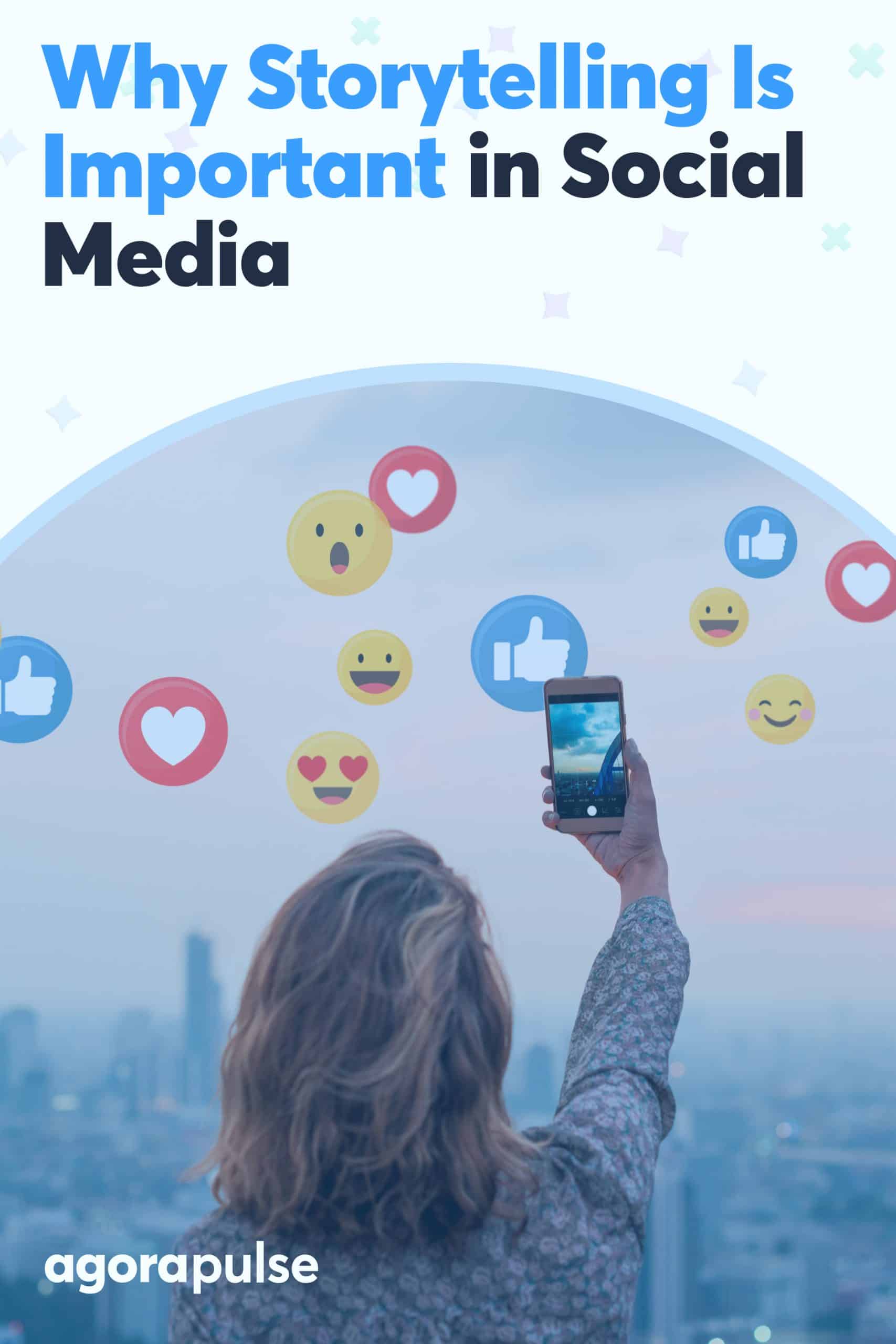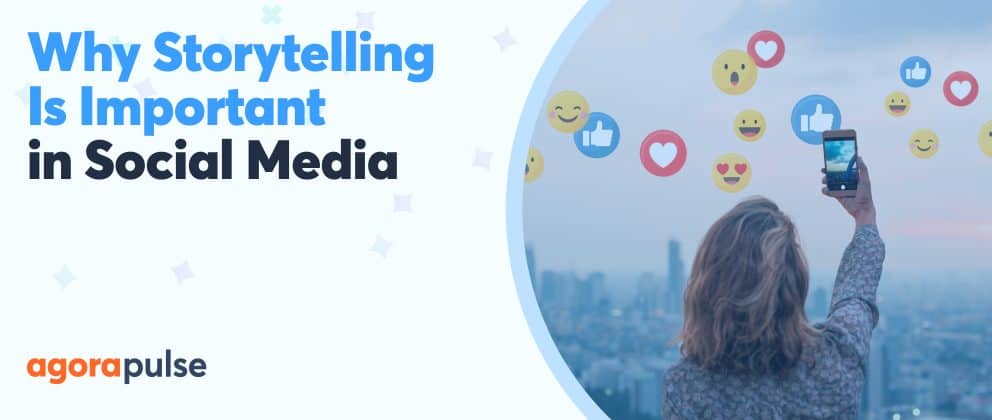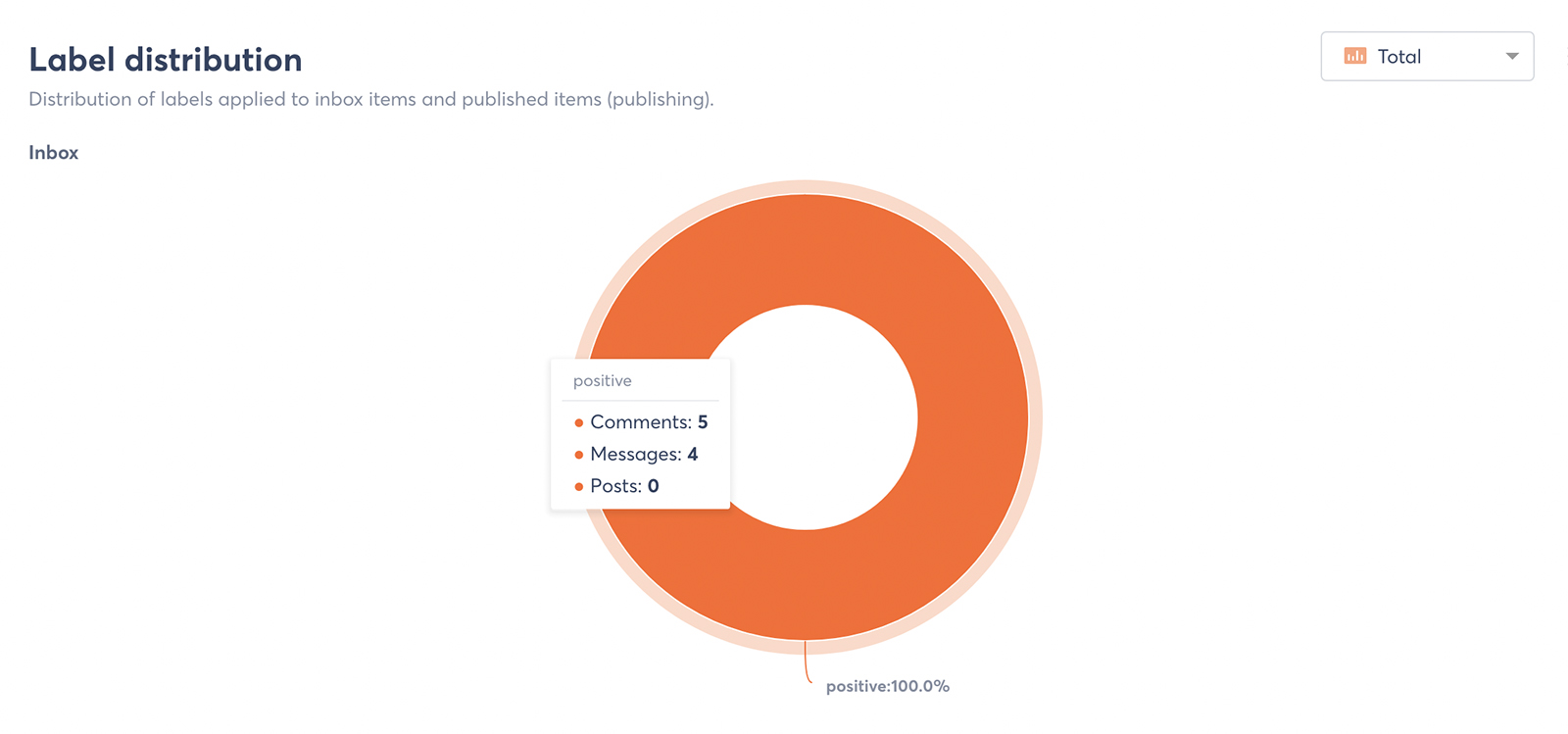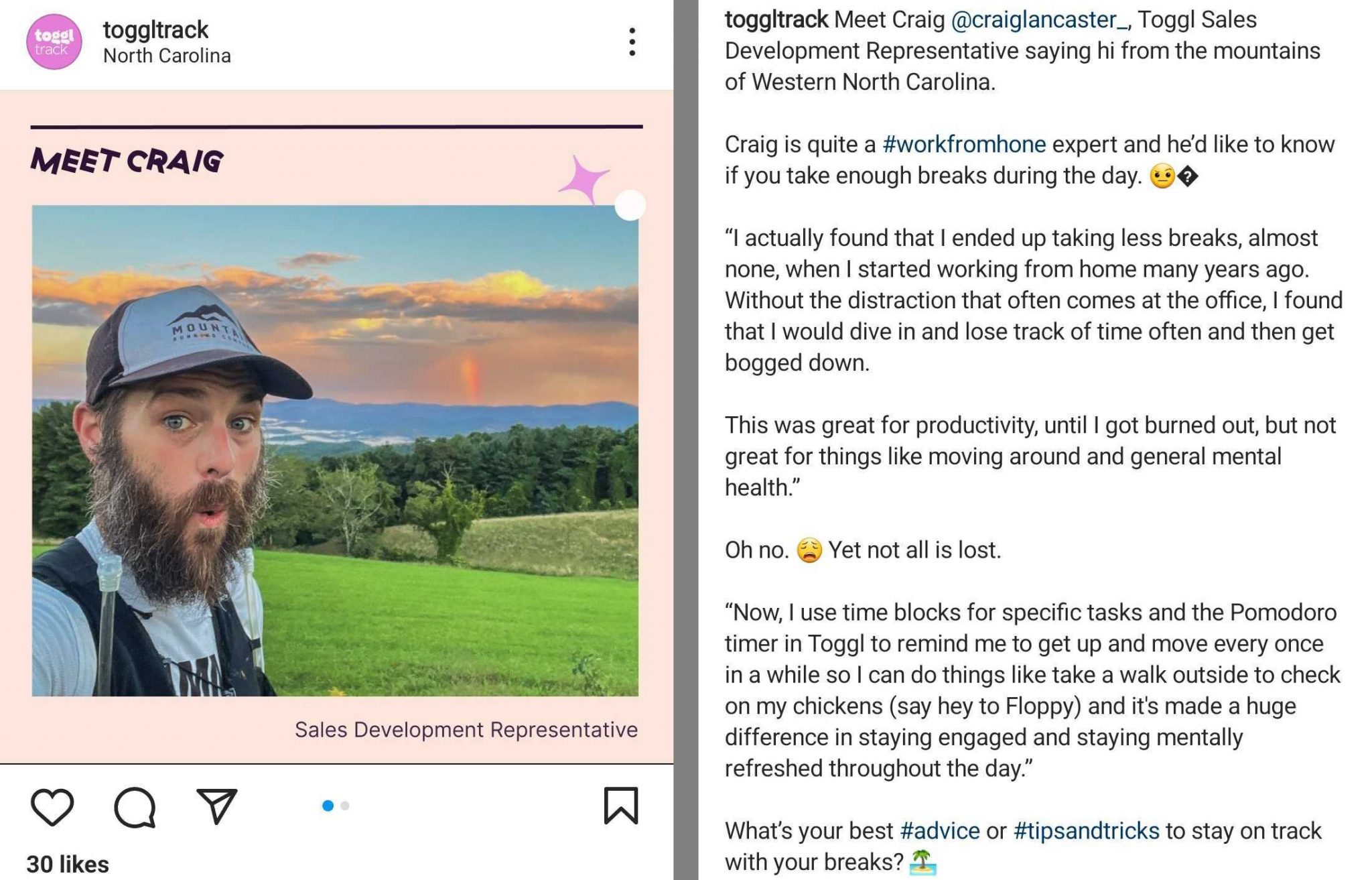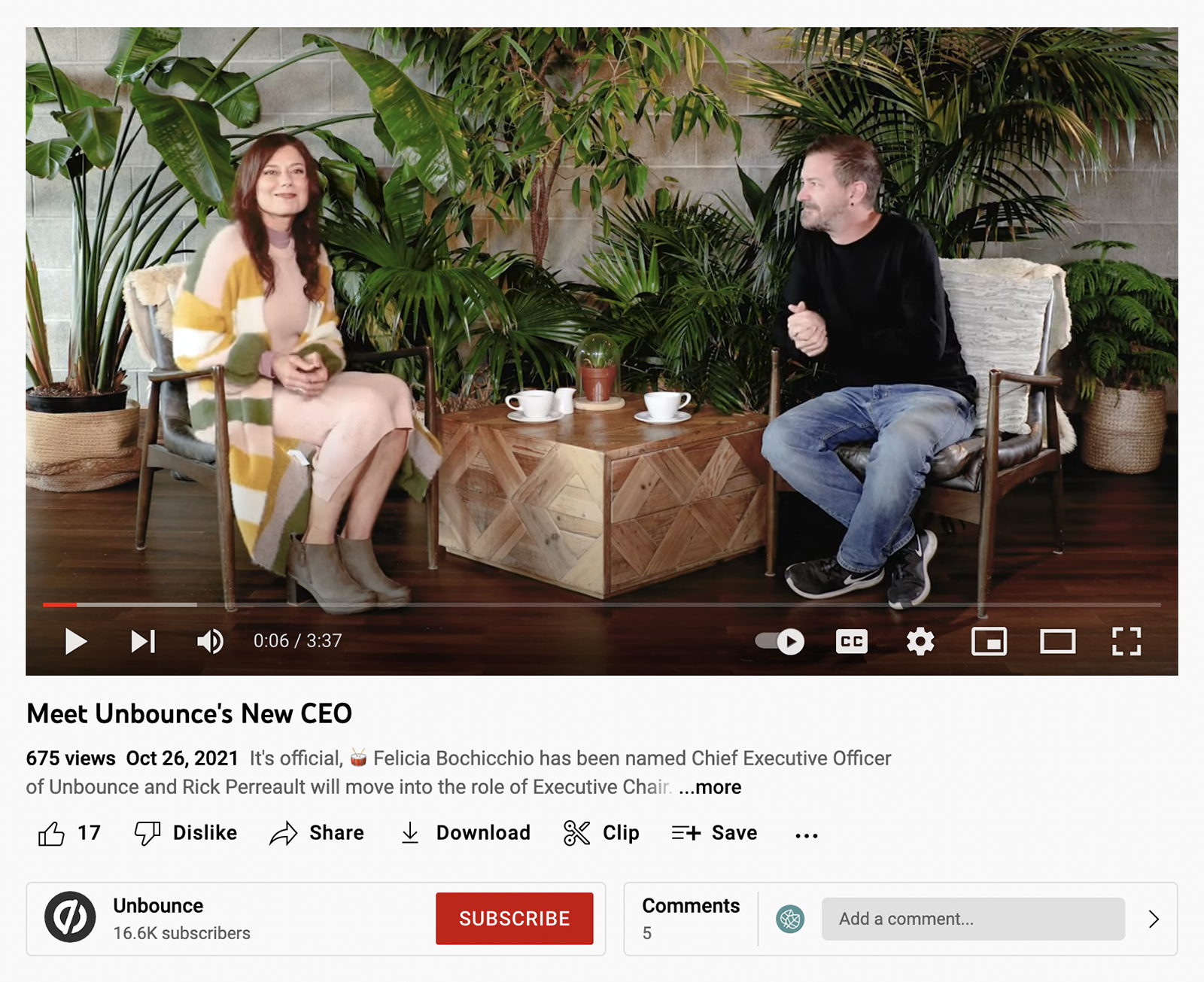When increased revenue and new business are key goals for your marketing team, you need a reliable strategy for generating sales on social media. Special offers and limited-time specials can certainly help.
But these tactics are far from your only options for convincing new customers to purchase. With brand storytelling, you can capture your audience’s attention, convert customers, and even improve loyalty over time.
Is your marketing team new to telling compelling stories? Discover why storytelling is important for social media and learn how to share your brand story effectively.
Why Is Storytelling Important in Business and Marketing?
As a marketing executive, you know that data often drives business decisions. With that in mind, you may be tempted to create marketing content that focuses on offer details, price comparisons, or statistics that support your brand.
But remember that data appeals to the logical part of your customers’ brains. If you only share facts and objective information, you won’t have a chance to appeal to your customers’ emotional sides.
Stories elicit emotion
As Nancy Duarte explains, telling stories is the opposite of delivering data-driven reports. Yet both are equally important in marketing—and storytelling is particularly effective at engaging your audience and drawing in your customers.
Do you want customers to feel joy, excitement, calmness, or another emotion when thinking about your brand or considering a purchase? With thoughtful storytelling, you can elicit emotion and make customers feel a certain way when your brand comes to mind.
In some cases, eliciting an emotional response may seem inappropriate—especially if you’re marketing a business-to-business (B2B) brand. Remember, however, that feelings like satisfaction and accomplishment can easily translate to more corporate spaces.
Narratives create memories
The benefits of storytelling extend way beyond emotions alone. When your team tells a compelling narrative, you can engage customers more effectively. According to Harvard Business Review, customers tend to retain brand stories.
What does that mean for your marketing strategy? If you can tell a story that sticks with customers, it can influence their buying decisions as they’re likely to remember it as they consider options.
Keep in mind that the stories that convert the most customers don’t always have to be positive or uplifting. Narratives that discuss challenges and vulnerabilities can be just as engaging, as long as they connect with your brand’s target audience.
Sharing stories builds trust
The pricier your products and services are, the harder you have to work to convert customers. For many brands, building trust is critical for turning casual prospects into loyal customers.
Storytelling gives your team an additional avenue to build trust and establish credibility. The more customers learn about your company’s mission, your executive team’s values, or your organization’s long road to success, the more likely they are to trust your brand.
Storytelling creates personal connections
In many cases, the stories you tell in your marketing materials center on your business or your team. Yet the best stories draw in readers and make personal connections with customers.
In other words, great storytelling takes customers along on rewarding journeys. Narratives make customers feel personally invested in executing missions, working through problems, and finding resolutions.
Narratives create value
Are you wondering how the personal connections, increased trust, and memorable emotions that go hand in hand with storytelling translate into financial benefits for your business? According to Forbes, storytelling can be lucrative for your organization.
In fact, organizations that successfully convey their purpose can achieve a profit performance ratio 750 times higher than businesses that don’t share their values. Having a great story to tell can be incredibly valuable for your organization—but you have to share it effectively.
7 Questions to Ask for Your Brand Story
Are you curious how you can tell your brand’s story in a way that sticks with customers and builds trust? Start by asking your executive team these questions:
1. What is your company’s origin story?
A great place to begin is thinking back to how your organization got its start. This line of thinking can go several different ways. For example, who founded your company? Is the founder still a key figure in the organization or has another capable leader taken over?
Where did your organization first begin doing business? Is that city, state, or community still a major part of your company’s identity? Does your company have connections with other local businesses or entrepreneurs?
What was the impetus for launching the business? Did the founder(s) identify a persistent problem to solve? Can you frame it in a way that engages customers and inspires trust?
2. How does your organization aim to make a difference?
For mission-driven companies, this question will be easy to answer. For businesses without a central mission, it may require a bit more thought. Yet it’s important to remember that every business strives to make a difference in customers’ lives.
Here are a few additional questions you can use to frame your answer: Does your company aim to solve a persistent problem? Are your products or services designed to bring about a certain resolution? What is your brand’s unique selling proposition (USP)?
3. Who are the primary people behind your brand?
If your company’s founders or executive team members have personal brands, their well-crafted stories may enhance your brand story. But even if your team is accustomed to staying behind the scenes, making them part of the narrative is helpful.
Think about how the company’s founder and executive team have shaped the brand’s mission and success. Consider highlighting other team members, even if they have more minor roles. By introducing the faces behind your organization, you can make more personal connections with customers.
4. What have been your company’s biggest failures?
It’s easy to appreciate success stories. But companies that overcome challenges yet still forge ahead often have more relatable stories to tell. When customers can imagine themselves in your company’s position, they may be more likely to remember and trust your brand.
For example, ask your company’s founders to think about all the struggles they overcame to get your product on the shelf.
Encourage your executive team to think about times they considered shutting down the company or leaving—and why they remained committed.
5. What are your audience’s main motivations?
When you tell brand stories, the facts and events come from your company’s history. But for best results, they should appeal to your audience and get them to choose your organization over its competitors.
As a result, it’s important to consider what motivates your customers—and use those goals to craft your story. For example, your customers may want to run their own businesses more efficiently, improve their health, or look more stylish.
6. What is your best customer success story?
One of the best ways to invite prospects to see themselves in your brand story is to share actual customer stories. Stories that highlight your customers are likely to resonate with a wider audience.
For example, you may share a story about how your organization helped a customer overcome a common problem. If you tell the story from the customer’s perspective, you can use language that’s familiar to your prospects—which can make the story more relatable.
7. What storytelling assets do you have—and which do you need?
Sharing compelling narratives requires more than just writing a few Facebook posts or creating a lengthy Twitter thread. To make your brand story more memorable, use a variety of media types—including photos, graphics, and videos.
Before you start planning social media content, take some time to list the content you already have. For example, you may already have a case study that you can use in a customer story or a video of your founder discussing the organization’s origin story.
Then map out the rest of the content you need to make this project successful. For example, you may need executive team headshots that you can turn into graphics or video interview clips that you can publish as individual reels.
How to Tell Your Company’s Brand Story
After asking the questions above and collecting assets you can use for storytelling, you can begin plotting the narrative you want to share. Use these tips to plan your brand story and work it into your social media content effectively.
Start with the conflict
Every great narrative starts with a problem that needs to be overcome. Start your brand story by explaining a key conflict. For example, your company’s founders may have identified a way to solve a common customer problem—but they couldn’t find the support they needed to get the product into customers’ hands.
Kicking things off with the conflict can be a great way to hook customers and get them invested in the story from the very beginning. Consider telling your story in parts to increase the chance of social media followers tuning in for the rest of the narrative.
Detail the struggle
It isn’t always easy to relive or describe struggles, especially when you want your organization to appear successful. But sharing challenges is a great way to introduce vulnerability and make your brand more relatable to customers.
Don’t be afraid to share the many trials your organization has experienced or the frustration your team felt. All those experiences make your team seem more human, which allows customers to feel more of a personal connection.
Make the resolution relatable
Finally, share how your team overcame the problem and resolved the issue successfully. Remember to make the conclusion relatable to your audience rather than making it solely about your brand.
For example, your founders may have successfully launched their first product after years of trials. What does that mean for your audience? It may mean that customers can finally buy your company’s first product.
Or it may have been the first in a long series of challenges. Your hardworking team may have gone right back to work to launch your current product line—which may feature the award-winning products your customers know and love.
Be authentic
No matter which kind of story you plan to tell, make sure your brand story comes across as genuine. An overly polished brand story may sound nice, but it probably won’t create the same personal connections that a more vulnerable story would have forged.
To elicit emotion, tap into the feelings you want customers to associate with your brand. For example, if you want customers to feel successful when they use your products, make sure your brand story inspires that emotion.
Get your audience involved
Your owned social profiles don’t have to be the sole sources of your brand story. Instead, customers and influencers can participate in telling the story and sharing their own similar struggles.
For example, as you share each part of your brand story, you can ask social media followers which part resonates the most. If you partner with influencers or brand ambassadors, you can ask them to include part of your brand story in the content they create for you.
Gauge customer sentiment
As you start weaving your brand story into your social media content, use tools like Agorapulse to read the room. With Agorapulse’s inbox labels and custom reports, your team can get a sense of how followers are responding to your content.
For example, you can use Agorapulse’s built-in moderation tools to label comments automatically. Then you can monitor the ratio of positive to negative sentiments. Your team can also create custom reports to help stakeholders assess the effect of these efforts.
Use analytics to see what works
Agorapulse’s audience and content analytics can also help your team understand what’s working. You can use the audience reports to track growth over time and pinpoint days when you attracted an unusual number of followers.
With Agorapulse analytics, you can also track content performance. Using this data, you can see which content types and platforms are working best for storytelling. Then you can fine-tune your strategy and do more of what works.
Examples of Storytelling in Social Media
Do you want to draw inspiration from brands that are already telling compelling stories? Take a look at some great examples of brands that do storytelling right on social media.
Mailchimp
As a marketing automation platform with a range of DIY tools, Mailchimp appeals to small business owners and solopreneurs. To connect with its target audience, the brand launched a YouTube series, The Road Map. This long-form video series tells the stories of women entrepreneurs as they launch their startups and work to build successful businesses.
Microsoft Life
As a global tech company, Microsoft has a lot of stories to tell. To share such a wide range of narratives, the brand has established the @MicrosoftLife Twitter account, where the people behind the brand can share their stories. In the video above, employees from those communities tell their stories, making the company and its products more relatable to the target audience.
REI
REI Co-op’s collaboration with Outdoor Afro is more than just a collection of products. It’s a fashion-based solution designed to help Black people enjoy the outdoors. The Facebook video above shares a behind-the-scenes look at the product design and the story behind the collaboration.
Toggl Track
As a time-tracking app, Toggl Track is designed for business owners, agencies, and freelancers. Its target audience is remote workers, many of whom juggle multiple clients. To connect with its audience, the brand uses Instagram to introduce members of its team—most of whom are also remote workers. In the Instagram post above, one of the company’s sales representatives shares tips for work-life balance.
Unbounce
When Unbounce co-founder Rick Perreault stepped down from his leadership position in 2021, the landing page software brand sought to bring its customers behind the scenes and share the story of the change. In the YouTube video above, Perrault introduces Felicia Bochicchio as the brand’s new CEO and highlights her many growth-focused initiatives.
What We’ve Learned About Why Storytelling Is Important in Social Media
Successful social media marketing requires much more than posting links to product pages or promoting limited-time sales on services. Storytelling is important in social media because it helps establish your organization as an authentic brand that customers trust and remember.
With a social media solution like Agorapulse, you can easily incorporate storytelling into your marketing efforts. From content planning to social media reports, Agorapulse has the tools your team needs to market your brand through compelling narratives. Check out our free trial of our social media management software.
